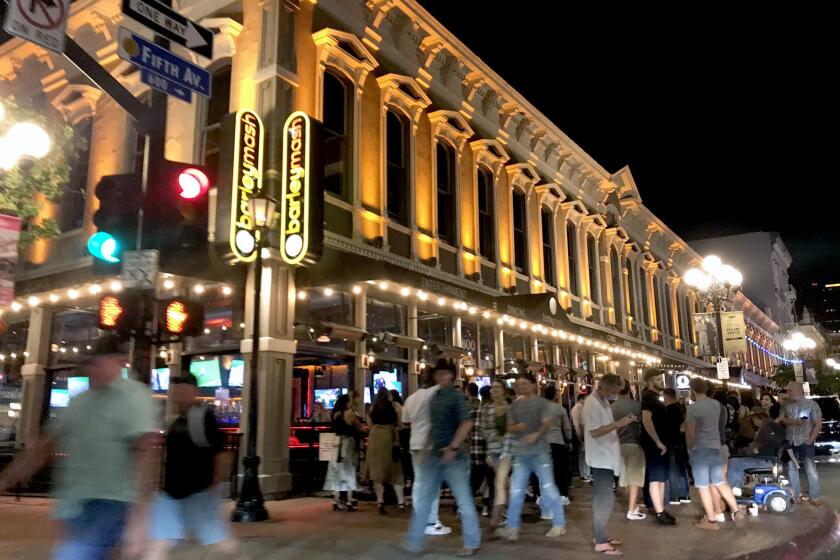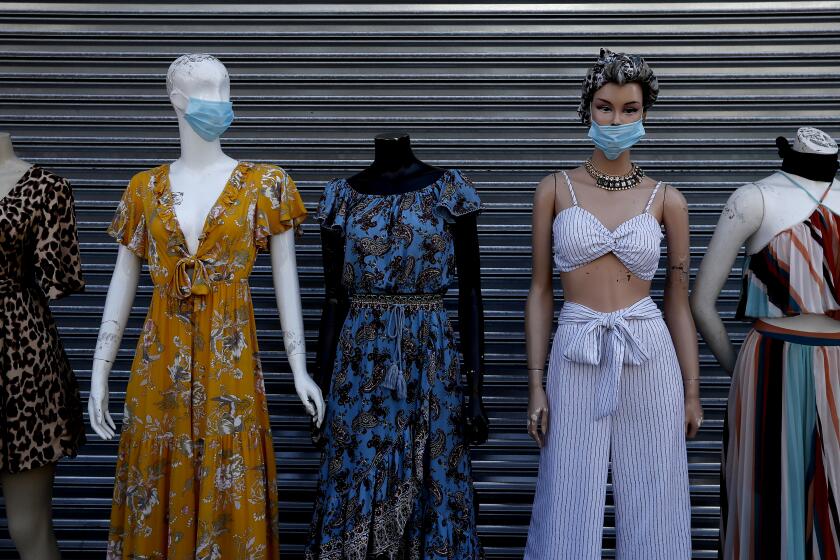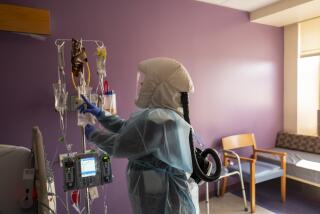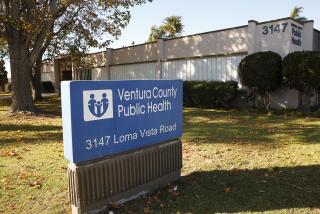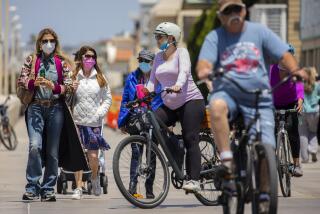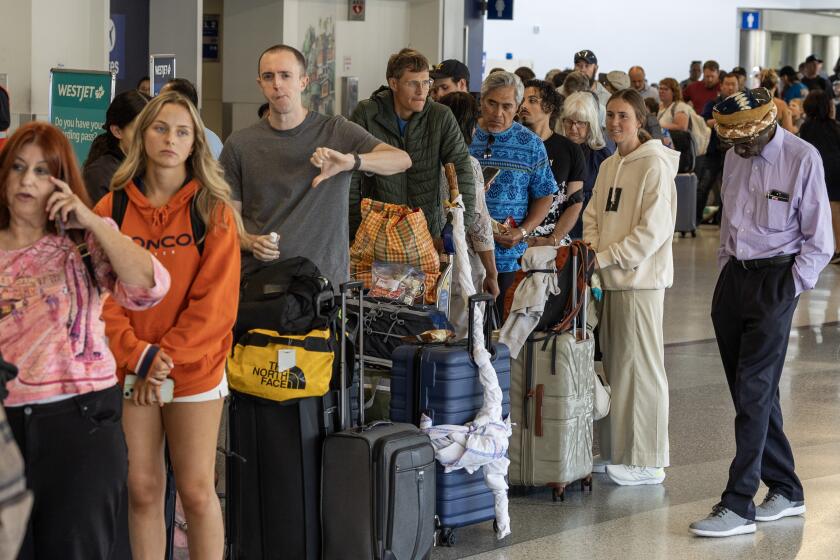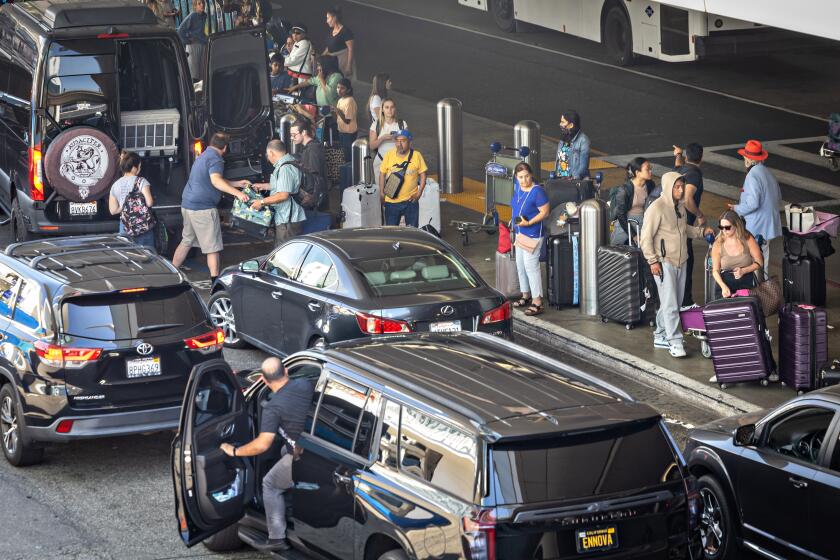Coronavirus hospitalizations creep up in Ventura County, raising concerns about reopening
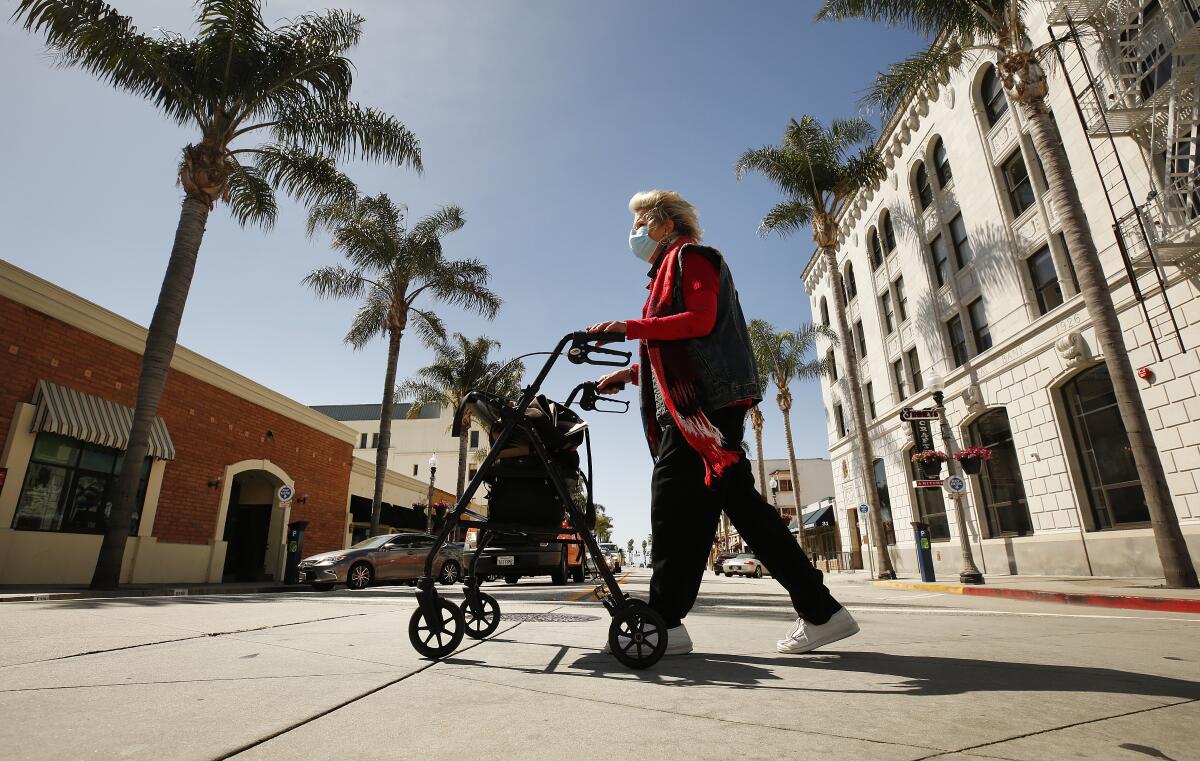
Officials in Ventura County have expressed concern over an uptick in the number of COVID-19 patients being cared for in local hospitals and said they might slow reopenings if the trend continues.
While coronavirus cases have been going up as more California businesses reopen, officials have said they think the increase is caused by an increase in testing, not by community spread. They have pointed to hospitalization rates as a better sign of whether the virus is surging.
And although hospitalizations remain flat in many places in the state, they are increasing somewhat in a handful of regions, including Ventura County.
The number of hospitalized patients in Ventura County ticked down over the course of a few days in the last week — from 42 to 37 — but that the trend has since reversed, and hospitalizations hit 47 on Tuesday.
That range is still significantly higher than two weeks ago, when only about 20 COVID-19 patients were hospitalized, according to county Public Health Officer Dr. Robert Levin.
Though health officials say there is still plenty of space in its hospitals, it’s possible the county could have to press the pause button on reopening additional sectors of the economy if hospitalizations continue to rise.
Newsom said COVID-19 hospitalizations in the state remain stable weeks after restrictions started to be modified and maintained that the safeguards in place continue to effectively slow the spread of the coronavirus.
“At this point, it would be foolhardy to just open up and continue to open up everything given … what our numbers are doing,” Levin said during Tuesday’s meeting of the county’s Board of Supervisors.
Ventura County allowed in-restaurant dining and in-store shopping to resume on May 21, permitted hair salons to reopen on May 26, and allowed gyms and bars to reopen last Friday. California officials are set to allow counties to decide starting this Friday to reopen nail salons, tattoo shops and massage therapists in counties that have filed paperwork to accelerate their reopening.
Ventura County officials, however, said they may decide, for now, to keep nail salons and tattoo shops closed and not allow massage therapists to resume operations in light of the concerns about the increased coronavirus hospitalizations.
Levin said he personally would have no issue with further reopening if the data support such a move. Even as more spaces reopen, though, he said it’s vital that residents continue to observe physical distancing to stem the spread of the virus.
“We have met the enemy, and they are us,” he said. “And many of us have to do a better job of social distancing and quarantine. Some of us are doing a great job; we’re stalwarts. If we can do this — and I know we can — we can prevent the state from telling us that we must take a step back from some of the gains we’ve made in opening our activities and businesses.”
Statewide as of Sunday, officials reported there were 3,102 patients with a confirmed case of the virus in California hospitals and 1,220 patients with suspected cases. The combined tally is the first increase in the number of hospitalizations following a six-day decline.
In Los Angeles County, 1,285 people were in hospitals, health officials said Monday. Dr. Christina Ghaly, the director of the county’s Department of Health Services, said officials are working with the state to prepare for the possibility of an influx in patients, which could potentially overwhelm facilities in the county.
Health officials noted last week that coronavirus transmission continues to worsen in Los Angeles County, bringing with it the chance that the nation’s most populous county could run out of intensive care unit beds in two to four weeks. The numbers have not reached danger levels yet, but health officials said they are monitoring conditions carefully for any signs of new pressures on hospitals.
California health officials fear outbreaks if people don’t follow public health rules as the state reopens. Evidence shows rules aren’t being followed.
Santa Barbara County and the San Joaquin Valley are also being closely watched for increasing coronavirus hospitalizations, according to the state Department of Public Health.
Santa Barbara County is seeing increased hospitalizations in the northern part of the county. The increase has been blamed on rising community transmission amid increased gatherings, as well as workplace spread. Outbreaks in skilled nursing facilities are also a factor.
The same problems are being blamed for an increase in hospitalizations in San Joaquin County, east of the San Francisco Bay Area.
And in the the broader San Joaquin Valley, one of the nation’s most important agricultural areas and home to some 4 million residents, increasing hospitalizations were reported in Kern and Kings counties, where nursing home outbreaks are a contributing factor.
In the last three days, five counties have experienced more than a 10% rise in patients hospitalized with COVID-19: Contra Costa (13%), Kings (18%), San Joaquin (12%), Santa Barbara (27%) and Stanislaus (42%).
Increasing hospitalizations and elevated disease transmission have also been recorded in Kern County amid outbreaks at state and federal prisons as well as because of residents in nearby counties being admitted to the Kern County hospital, state officials said.
Kings County has reported a number of outbreaks, including at a meatpacking plant in Hanford and an Adventist Health hospital. An outbreak at Avenal State Prison caused the virus to spread to nearby areas — including Fresno County — carried by prison employees returning home.
In Tulare County, home to cities including Visalia, Tulare and Porterville, state officials are closely monitoring elevated disease transmissions related to outbreaks in nursing homes and workplaces, as well as the difficulty in preventing transmission within households.
And Imperial County, east of San Diego, is also experiencing elevated disease transmission as Americans return from Mexico, which is experiencing a worsening outbreak.
Researchers in England say drug can reduce death rates in very ill COVID-19 patients. But it’s risky for those with mild symptoms.
A recent surge in hospitalizations in Sacramento County was linked to members of the same household who gathered for birthday parties and a funeral.
Dr. Olivia Kasirye, the county’s health officer, said many people think “we’re out of the woods,” but health experts continue to warn of the seriousness of the virus and the need for safety and health precautions as larger swaths of the state continue to reopen.
On Monday, California reported nearly 3,400 new cases of the coronavirus, the highest number at the start of a week since the outset of the pandemic.
Despite the continued rise in infections, California’s top health officials have said that overall case counts are not necessarily a measure of how the state is faring in its fight against the novel coronavirus, noting that increased testing can drive up the number.
“We’ve ramped up testing in an extraordinary way, nearly hitting our goal that was set for August — not June, not July, but August — of getting to 60,000 to 80,000 tests a day,” said Dr. Mark Ghaly, the state’s secretary of Health and Human Services. “We’re already knocking on that door, averaging in the mid- to high 50s over the past few days across the state.”
Officials, instead, are closely monitoring two metrics as they gauge how California is handling the pandemic: the positivity rate, or the percentage of people who have tested positive, and the daily number of hospitalizations. A rise in the former could mean an uptick in community transmission separate from increased testing. A rise in the latter may mean that more people are becoming seriously ill, possibly jeopardizing the ability of the healthcare system to deal with the influx in patients.
Health experts say it will take businesses, individual and local governments all working together to make sure there is not a new surge.
Not only does the hospitalization rate worry health officials, but so does the number of ICU patients.
While the number of people in intensive care units for confirmed or suspected coronavirus infections is down statewide — falling about 4% last week from six weeks ago — parts of California are seeing spikes.
According to a Los Angeles Times analysis, Orange County has experienced a 76% jump in coronavirus intensive care unit hospitalizations in the last six weeks. During the week of May 4, the county reported a seven-day average of 94 people with confirmed or suspected coronavirus infections in its ICU beds. Last week, that number rose to an average of 165.
The eight-county San Joaquin Valley has seen a 45% rise in coronavirus ICU hospitalizations in the last six weeks, jumping from a seven-day average of 79 people to 114.
There was a 38% increase in coronavirus ICU patients in San Bernardino County, rising from a weekly average of 67 ICU patients six weeks ago to 93 last week
Ventura County saw its seven-day average of coronavirus patients rise from 18 six weeks ago to 21 last week, while San Diego County observed a seven-day average of 139 coronavirus ICU cases six weeks ago, which climbed to 147 last week.
Still, other areas — including Los Angeles County and the Bay Area — have recorded a decline among ICU beds for coronavirus patients. The nine counties around San Francisco Bay have seen ICU bed use fall by 31% over the last six weeks
Los Angeles County has seen its ICU cases consistently decline. Six weeks ago, the seven-day average of daily coronavirus ICU hospitalizations for patients with confirmed and suspected infections was 633; last week it was 501, a decline of 21%.
In the seven-county Sacramento area, the seven-day average of daily coronavirus patients in the ICU was 23 six weeks ago; last week, it was 29.
And in Riverside County, which was also hit hard early in the pandemic, has seen a 17% decline in ICU cases. Six weeks ago, the seven-day average was 105, while it was 87 a week ago.
Times staff writer Alex Wigglesworth contributed to this report.
More to Read
Sign up for Essential California
The most important California stories and recommendations in your inbox every morning.
You may occasionally receive promotional content from the Los Angeles Times.

